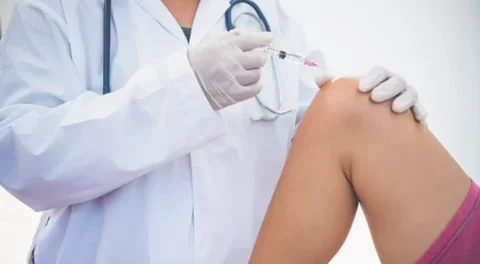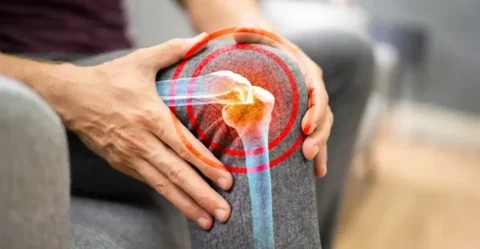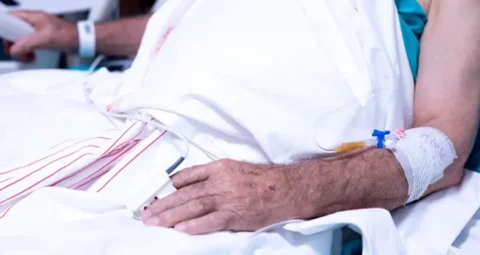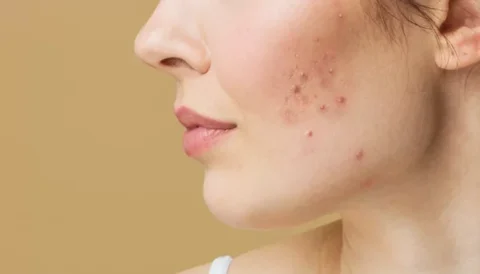Plasma-rich protein therapy has become one of the most effective ways to treat a variety of medical and cosmetic conditions. And while the exact range of what PRP therapy can or can’t treat has yet to be conclusively proven, that hasn’t stopped many cosmetic and medical practices/clinics to start using PRP therapy as a method to treat more common, everyday complaints of patients like hair loss.
But can PRP make a visible difference as a hair treatment? The exact efficacy of the treatment needs further study, PRP treatment does seem to make some difference in hair growth and hair health. If a clinic wishes to invest in PRP hair treatment, they have to make sure that they have the technical skill required to operate the PRP machine, and the experience to apply it properly.
How PRP Treatments Affect Hair
PRP treatments are a fairly straightforward process: blood is withdrawn from the patient, processed into platelet-rich plasma, then injected back to them. Because platelets contain essential factors and proteins that support cell growth, they may help reinvigorate the skin to repair itself and grow more cells. While the body is capable of this self-repair process autonomously, using PRP to inject a more concentrated form of platelets directly into the treatment area can have better results.
For hair growth, PRP treatments act as a catalyst to help improve hair health and overall scalp wellness. By improving blood circulation to the rest of the scalp, the body can maintain ideal hair conditions for both repair and regrowth. Furthermore, since the patient’s own platelets were used for the process, there’s very little likelihood that the body will reject the treatment.
Admittedly, the specific effects that PRP has on hair haven’t been that well-studied yet, though the existing data does point to some promising results. Since PRP injections trigger the same regrow and repair response seen in traumatic injuries, using it for hair treatment may help improve hair density, decrease hair density, and can prove beneficial overall to scalp health. But since the practice of using PRP therapy hasn’t yet become a widespread procedure performed on hair treatments, where does that leave practices who want to invest in it?
PRP Treatments Require A Lot Of Preparation

One factor that can potentially hinder practices looking to invest in PRP for hair treatments is that to make one pure PRP sample, they’ll need to invest in special equipment like PRP tubes and a centrifuge to properly separate the platelet-rich plasma from the rest of the components found in the patient’s blood. While this process can technically use any laboratory centrifuge to accomplish, using anything less than a PRP-ready centrifuge will dilute the PRP sample, leading to less effective results.
Aside from this, PRP treatment also requires extensive skill and experience to conduct and apply properly, which is well outside the scope of normal aestheticians or cosmetologists. Because the process for drawing, processing, and re-injecting blood samples can be extremely delicate, an experienced dermatologist is the best candidate to conduct a PRP therapy regimen without risking adverse effects.
In addition to these concerns, the clinic itself has to be well-equipped for the storage and processing of a PRP sample. Since blood is only viable for PRP treatment for a short window of time after being withdrawn from the patient, a practice needs to have the requisite equipment and medical supplies to ensure that the sample doesn’t coagulate or get contaminated before it’s been processed and injected back into the patient. Given that most cosmetic clinics and medical spas do not have access to these facilities, this can also be a hindrance to their overall ability to deploy the use of PRP therapy in their services.
Learn more: What Is the Best Centrifuge for Prp Treatment?
So How Can A Practice Employ PRP Treatment For Hair?
But if these considerations can all be addressed by the practice without too much trouble, then using PRP for hair treatments can become an effective service that they can use with their patients to improve hair rejuvenation. Here are some guidelines to follow to ensure success with these treatments:
- Make sure that the patient understands the entire procedure. Given the relatively new status of PRP treatments for cosmetic applications like hair regrowth, a patient may have unrealistic expectations of how – and how fast the results – will appear. Briefing them on the exact process, expected results and routines to follow can help avoid this situation from happening.
- Ensure proper supplies are always at hand. PRP treatments aren’t a one-off procedure – for best results, patients may need two to three sessions before seeing visible results that they’re satisfied with. While there isn’t any immediate harm to delaying PRP treatments between completed sessions, the chance of ending up with a contaminated and unusable PRP sample becomes higher if the proper equipment and supplies aren’t used.
- Have patients be aware of the potential risks and side effects. Given the biocompatibility of PRP treatment, there aren’t a lot of risks involved with any complications when it comes to results. However, some patients aren’t a good fit for PRP treatment, so practices must make sure that they’re aware of the patient’s health record, and brief them of what to expect of any side effects they may experience after their procedure.
Clear communication is critical to a successful PRP treatment, and practices must always convey to patients the exact scope and limitations of PRP therapy to avoid any misunderstanding with the results.
An Alternative To PRP Hair Treatment: PEP Growth Factor Products
PRP treatment may be an excellent way to manage skin or hair conditions, but sometimes a practice will not have the resources or expertise necessary to use them for these reasons. However, there are alternatives that they can look into that can promise the same solutions for less hassle, like PEP Growth Factor products.
PEP Growth Factor products contain a proprietary mix of fibroblast growth factors, copper peptides, and other essential compounds that may help encourage hair growth and promote scalp health. These ingredients don’t need to be injected into the body like PRP treatments and can be applied by themselves or with other hair and skin revitalizing solutions for even better results.
In fact, it’s possible to combine the effects of PRP treatment with PEP growth factor products, since both don’t contain compounds that interfere with each other’s actions. But if the patient is just looking to improve the appearance of their hair and improve the look of their scalp, PEP growth factor products are an excellent alternative.
Buy PEP Growth Factor Products And Other Medical Supplies From FACE Medical Supply Today
PRP for hair treatment has shown promising results from the initial testing by cosmetic practices and clinics, and it may be a worthwhile investment for any medspa or clinic looking to expand their services. However, keep in mind that PRP treatment needs to follow a certain standard with the procedure and tools used to guarantee the best results – and it’s in this investment that the cosmetic practice should really examine before deciding to offer it to their clients and patients.
FACE Med Store has extensive experience in providing high-quality yet medical-grade tools and devices to practices at affordable prices, ensuring quality without high operational costs. Whether it’s tools for advanced treatments like PRP therapy or simple supplies to make sure the clinic keeps running well, we’ve proven ourselves to be reliable partners to many businesses over the years.
For more information about us and the products that we offer, contact us today.






